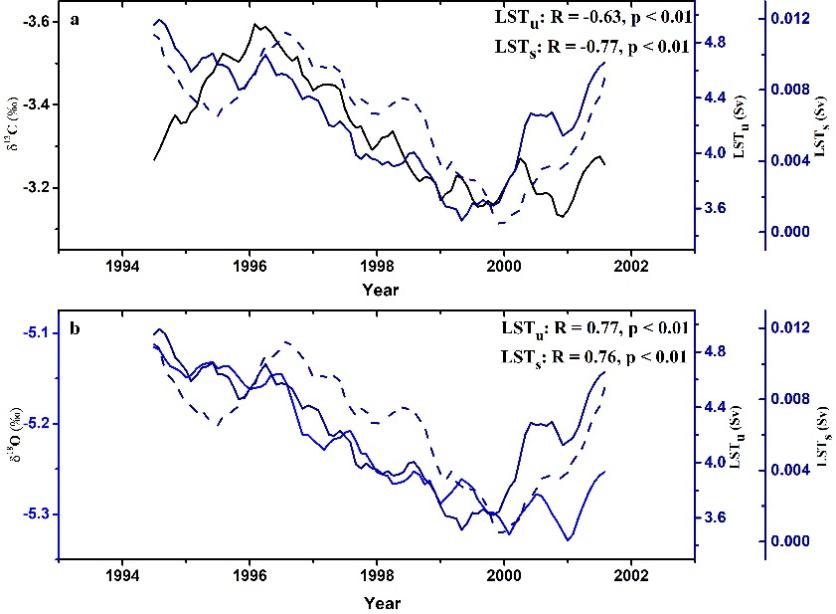The Kuroshio Current enters the South China Sea via the Luzon Strait and exerts significant effects on circulation and water mass properties of this marine basin. However, limited by the few on-site observations, multi-decadal variations in Luzon Strait Transport remain uncertain.
Recently, the research team led by Prof. HU Dunxin & Prof. SUN Weidong from the Institute of Oceanology of the Chinese Academy of Sciences (IOCAS) and co-researchers from Tianjin University and Taiwan University used coral isotopic proxy from Xiaoliuqiu Island along the Kuroshio intrusion route to reconstruct Luzon Strait Transport and investigated its interannual and decadal variability.
The study was published in Palaeogeography, Palaeoclimatology, Palaeoecology on Feb. 18.
Stable δ13C values of coral can record the δ13C variations of dissolved inorganic carbon in seawater. Coral δ18O values are controlled by both sea surface temperature and local seawater δ18O values, the latter of which is related to the hydrological balance (i.e., precipitation minus evaporation, as well as ocean advection) and sea surface salinity. The δ13C values of dissolved inorganic carbon and temperature of the South China Sea subsurface seawater are much lower than those of surface seawater, whereas the salinity is higher than that of the surface seawater.
Researchers found that increased (reduced) Luzon Strait Transport is expected to generate strong (weak) upwelling, resulting in low (high) δ13C values of dissolved inorganic carbon and sea surface temperature, and high (low) sea surface salinity, as recorded in the coral.
The interannual variability in the upper and surface layers of Luzon Strait Transport during 1977-2003 is reconstructed using the coral δ18O record. Coral δ18O data indicates that Luzon Strait Transport has weakened since the 1970s. The change of Luzon Strait Transport is associated with the northward (southward) migration of the North Equatorial Current bifurcation latitude: a northward (southward) shift of the North Equatorial Current bifurcation latitude weakens (strengthens) upstream Kuroshio transport, favoring an increase (decrease) in the Kuroshio intrusion.
"The information gleaned from such coral records provides an opportunity to study ocean current in the case that historical records are lacking," said LI Xiaohua, first author of the study.
This work was supported by the National Natural Science Foundation of China, the CAS Interdisciplinary Innovation Team project, the Strategic Priority Research Program (B) of the Chinese Academy of Sciences, and the Shandong Provincial Natural Science Foundation, etc.

Fig. 1 Comparison of the 3-yr running average of coral (a) δ13C values (black line) and (b) δ18O values (blue line) with Luzon Strait transport (LST).

Fig. 2 Reconstructed upper layer (0-745 m) Luzon Strait Transport (LSTu) and surface layer (0-1 m) Luzon Strait Transport (LSTs).
Li, X., J. Ma, Y. Liu*, S. Hu*, W. Sun, F. Nan, and C.-C. Shen. (2023). A monthly resolved coral δ13C and δ18O record of changes in the Kuroshio Current into the South China Sea via the Luzon Strait. Palaeogeography, Palaeoclimatology, Palaeoecology, 615, 111468.
(Text by LI Xiaohua)
Media Contact:
ZHANG Yiyi
Institute of Oceanology
E-mail: zhangyiyi@qdio.ac.cn
(Editor: ZHANG Yiyi)

